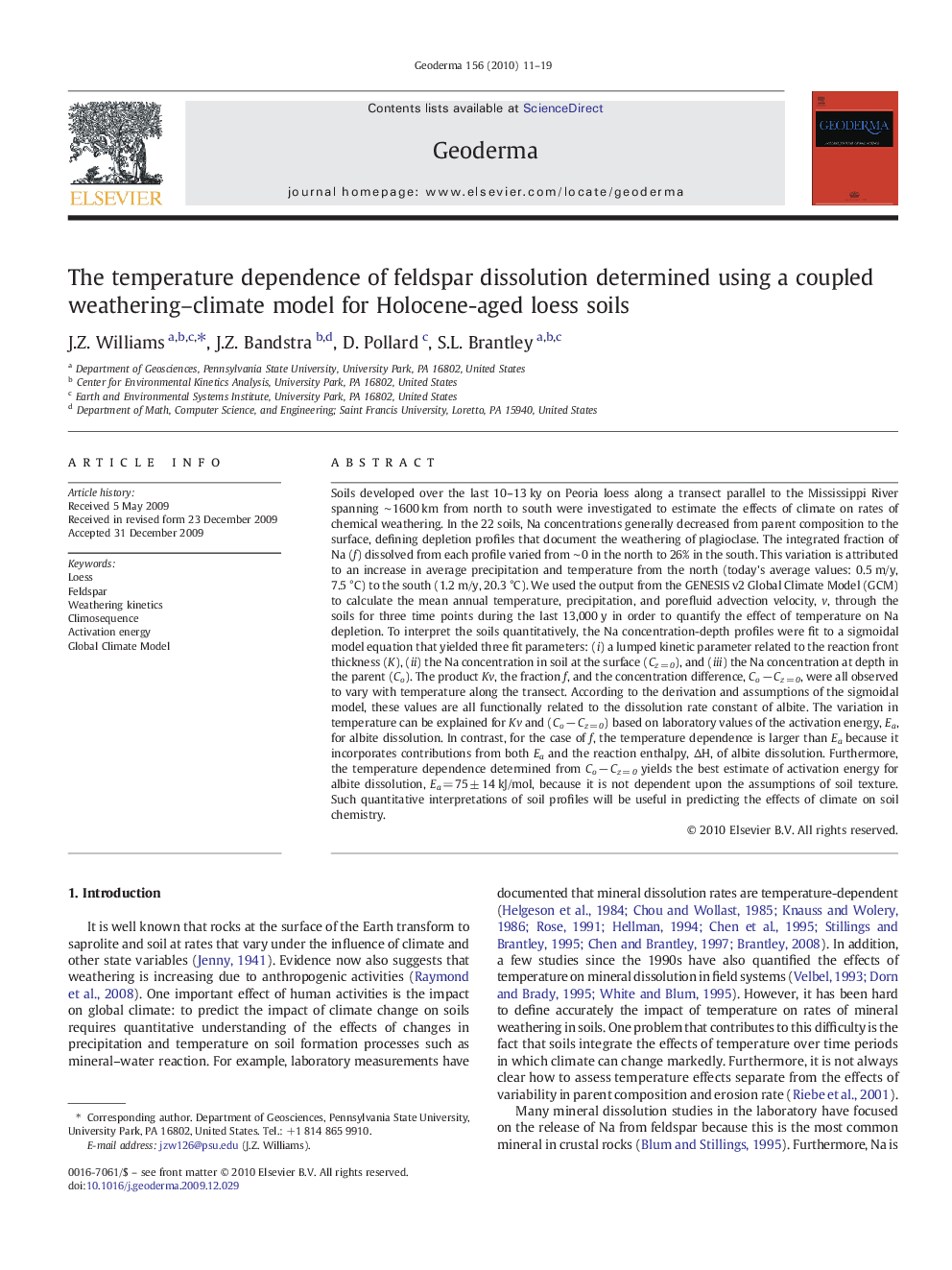| کد مقاله | کد نشریه | سال انتشار | مقاله انگلیسی | نسخه تمام متن |
|---|---|---|---|---|
| 4574515 | 1629522 | 2010 | 9 صفحه PDF | دانلود رایگان |

Soils developed over the last 10–13 ky on Peoria loess along a transect parallel to the Mississippi River spanning ∼ 1600 km from north to south were investigated to estimate the effects of climate on rates of chemical weathering. In the 22 soils, Na concentrations generally decreased from parent composition to the surface, defining depletion profiles that document the weathering of plagioclase. The integrated fraction of Na (f) dissolved from each profile varied from ∼ 0 in the north to 26% in the south. This variation is attributed to an increase in average precipitation and temperature from the north (today's average values: 0.5 m/y, 7.5 °C) to the south (1.2 m/y, 20.3 °C). We used the output from the GENESIS v2 Global Climate Model (GCM) to calculate the mean annual temperature, precipitation, and porefluid advection velocity, v, through the soils for three time points during the last 13,000 y in order to quantify the effect of temperature on Na depletion. To interpret the soils quantitatively, the Na concentration-depth profiles were fit to a sigmoidal model equation that yielded three fit parameters: (i) a lumped kinetic parameter related to the reaction front thickness (K), (ii) the Na concentration in soil at the surface (Cz = 0), and (iii) the Na concentration at depth in the parent (Co). The product Kv, the fraction f, and the concentration difference, Co − Cz = 0, were all observed to vary with temperature along the transect. According to the derivation and assumptions of the sigmoidal model, these values are all functionally related to the dissolution rate constant of albite. The variation in temperature can be explained for Kv and (Co − Cz = 0) based on laboratory values of the activation energy, Ea, for albite dissolution. In contrast, for the case of f, the temperature dependence is larger than Ea because it incorporates contributions from both Ea and the reaction enthalpy, ΔH, of albite dissolution. Furthermore, the temperature dependence determined from Co − Cz = 0 yields the best estimate of activation energy for albite dissolution, Ea = 75 ± 14 kJ/mol, because it is not dependent upon the assumptions of soil texture. Such quantitative interpretations of soil profiles will be useful in predicting the effects of climate on soil chemistry.
Journal: Geoderma - Volume 156, Issues 1–2, 15 April 2010, Pages 11–19